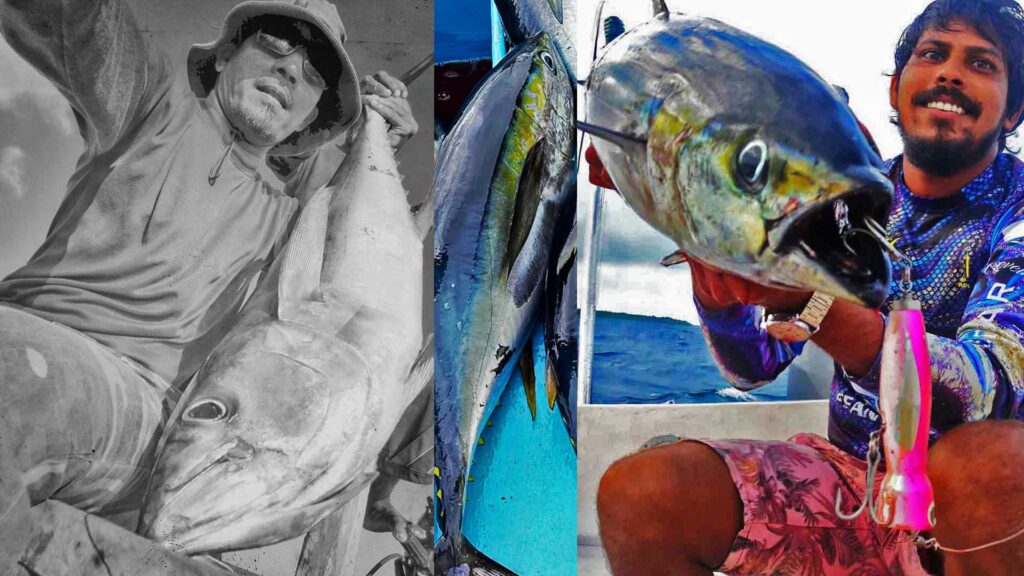
The fact that some of Earth’s species coexist and are intricately linked is amazing. Two very interesting species that live together in our water are the spotted dolphin and the yellowfin tuna. Fishermen in the Maldives use the presence of dolphins to locate the schools of yellowfin tuna (Adam and Jauharee, 2009; Anderson, 2005; Anderson and Shaan, 1998; 1998;1999).
Humans may lack a complete grasp of the science and understanding underlying interspecies interactions and cohabitation, but they have discovered some fascinating facts and validated some theories through observation. Scientists are amazed by how spotted dolphins (Stenella attenuata) and yellowfin tuna (Thunnus albacares) interact with each other.
Low oxygen levels, warm surface waters (<60 m deep), and a shallow thermocline are believed to help tuna and dolphins stick together in the Eastern Tropical Pacific Ocean (ETP) (Green 1967, Perrin et al. 1976, Au & Perryman 1985, Edwards 1992, Norris et al. 1994). However, this pairing is also common in the ocean around the Maldives. Sri Lanka, the Philippines, Indonesia, and some other countries also observe it (Anderson & Shaan 1999).
Since ancient times, Maldivian fishermen relied on dolphins and seabirds. Our seasoned fishermen say that when tuna enter the atolls, dolphins depart. Fisheries around the world used this association to their advantage. Fishing boats used seabirds to help them look for dolphins after World War II. Then, they utilized live baitfish to stir the water, attracting tuna to the surface, which they then landed using hook-and-line gear.
By the mid-1960s, the use of dolphins to surround tuna also emerged. To catch tuna, dolphins were actively chased to circle them (Scott, Chivers, Olson, Fiedler, Holland, 2012). Many years of observations have led to two main hypotheses related to the association phenomena. Foraging and lessening of predation are two ways that the relationship may help one or both species.
Researchers looked into the relationship between spotted dolphins and yellowfin tuna in the eastern tropical Pacific Ocean in 2012. Scott, Chivers, Olson, Fiedler, and Holland reviewed the hypotheses based on this study in 2012. The research was based on tracking studies, daily foraging and prey patterns, and a spatial study of oceanographic features to achieve these objectives.
The research pointed to the possibility that the large group of these two species moving together may scare off prey. Hunting dolphins can echolocate prey from a long way away. Additionally, tuna have an excellent sense of smell (Norris 1978, Norris & Dohl 1980a, Au 1991, Pryor & Kang-Schallenberger 1991, Edwards 1992, Norris et al. 1994). When the thermocline is not very deep, the association happens (Au & Pitman 1986, Edwards 1992, Norris et al. 1994, Hall et al. 1999). The warm, mixed surface water and the colder, deeper water are separated by a layer known as the thermocline, where the temperature rapidly changes with depth. If the association is based on feeding, an energetics model (Edwards 1992) says it will most likely happen where prey is spread out in a few but dense areas.
Given that big tuna can move faster than dolphins, scientists believe dolphins may unintentionally form a connection (Pryor & Kang-Schallenberger 1991, Edwards 1992). In some areas, scientists have seen tunas and dolphins temporarily grouping together to consume the same prey.
Ashmole and Ashmole (1967) also propose that tunas are capable of propelling their prey to the surface, and dolphins are also exploiting this spectacle. The hypothesis of protection from predators is also important. Predation is less likely to happen when a lot of different species are traveling together in the ocean. This strategy effectively lowers the risk by spreading it across a large number of individuals.
It will be difficult for predators to locate a potential target in this large group of fast-moving fish that are all the same color. Fewer large groups of prey are more likely to be attacked by a single predator than many smaller groups of prey that are spread out. This large group’s ability to detect scents allows them to identify predators across a wide range.
Tuna is genetically inclined to associate with sharks, dolphins, whales, and floating objects, according to the “meeting point” hypothesis (Freon & Misund 1999, Freon & Dagorn 2000). According to research and fishermen’s experiences, yellowfin tuna is the first to associate with dolphins. However, feeding advantages do not yield benefits, and this link is neither required nor lasting.
